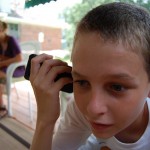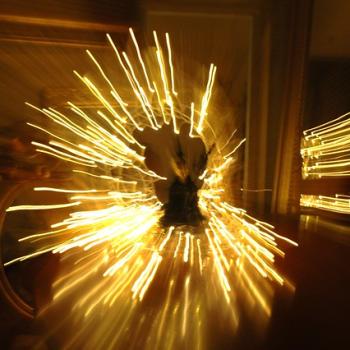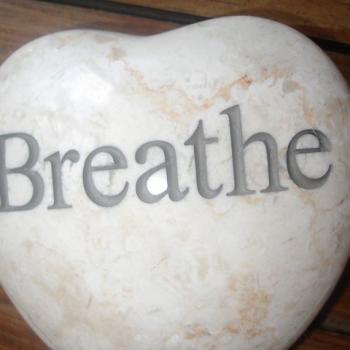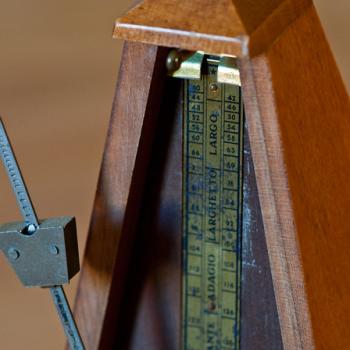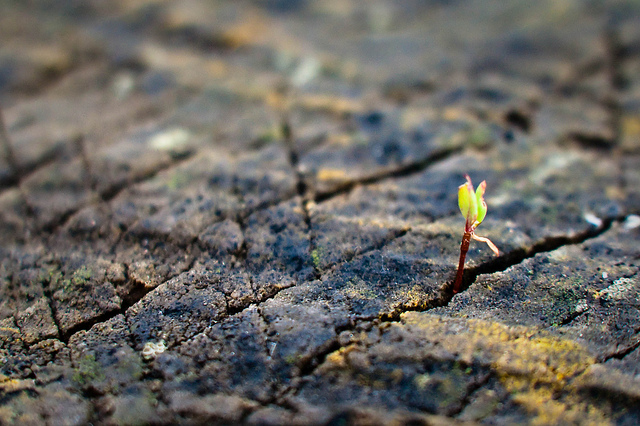
Hope for Lent
My church is a liturgical church, and is in a liturgical season called Lent. This year Lent began on Ash Wednesday, March 1, and will continue until Easter next month.
Some people choose to either give something up or begin a new discipline during Lent in preparation for Easter. One year I gave up fear for Lent. Lent is an opportunity for me to begin behaving in ways which have changed the rest of my life.
This year I am practicing and discerning hope. Hope seems more significant than chocolate, caffeine, or social media.
Hope is not a mere feeling or attitude. Like gratitude or curiosity, hope is a way of life.
Seeds of New Hope
Many of us are not naturally, automatically hopeful. Hope is like a muscle which needs to be developed through exercise, a crop which needs to be tended. As we proceed more deeply into Lent, we have prepared the ground and planted and our seeds. The shoots of hope may be beginning to break through in us.
We live in a world where hope does not appear to be indigenous. If hope is going to grow in our lives, we need to plant and cultivate it.
We have done the preparing, the plowing and planting, feeding and watering. Now we anticipate indications hope is growing, the first shoots breaking ground.
Hope is not required to meet our expectations. We have been working hard, trying to encourage hope to grow, and we may become impatient. Where are the results?
There is a long, arduous struggle for hope to grow from a seed into a shoot. Hope is at work in us, sending out roots into our lives and pushing things aside. The process of growth and struggle underground strengthen the hope in us. It is not easy for hope to grow where we have planted it. Hope must persevere to survive.
Is hope which cannot push through to see the light of day really hope?
Hope in Hard Times
Many of us are living in difficult times. Our lives are filled with challenges, obstacles, and hurdles we need to overcome. We feel the odds are stacked against us, we are struggling to keep going.
Life seems to be an ongoing process of running uphill into brick walls. We are like the shoot, working our way through the darkness seeking daylight and fresh air.
How do we find hope in the midst of hopelessness and despair?
My own search for hope has taken me on a twisting, turning journey. I have looked for hope in knowing, in having as much information as I could find. We may seek hope in the people around us, expecting them to spark our hope in us. Hope may be something we seek in religion or in philosophy. Some people try to act their way into hope, pretending to hope as a method of seeking hope. People may seek hope by traveling, looking for experiences to build hope for their futures.
Ultimately, I have not found lasting, true hope in any of these places. Each of them may be helpful or pleasant, but they are not where my hope grows.
Where is Hope?
Our hope is in the future. The essential question about hope is do we, in the present, believe the future will be better?
How we understand our past experiences and present circumstances shapes our hope. There are many ways of describing how we approach the future. They tend to boil down to choosing between fear and hope.
Hope and Fear
Some people fear the future because they have calculated predictable risks and rewards. They may have a clear idea of what it will take to succeed. Some are realistic, while others may be a little less realistic. They could wonder whether they have the skills or abilities to become the people they would like to be. Their past experiences may cause them to doubt and be afraid of what the future holds for them. External forces may threaten their future safety and security. They may be concerned about their physical or financial health in the future.
Some people expect the future will not be as pleasant as the present, or the past. They fear the future, and lose hope.
Other people believe they have what it will take to prosper in the future. They have confidence in their qualities and character. Some people believe things tend to work out for people who have a positive attitude. Some are realistic, while others may be a little less realistic. Their experiences may reassure them.
Some people expect the future will be more pleasant than the past and the present. They have hope.
Qualities and experiences contribute to why some of us tend to be more hopeful than others. We can all, though, develop the practice of hope.
Breaking Ground
We plant seeds which send shoots up toward the surface. The hard work of establishing roots and pushing out a shoot takes place underground. It is difficult for others to recognize the inner work going on under the soil. We do not see the growth taking place until the shoot emerges from the ground.
The seeds of new hope we have planted for Lent are growing and working underground. Plants may just now be reaching the surface, giving evidence to our hope.
We work each day to make hope come alive. When we feel least hopeful, new hope emerges into the daylight.
Slowly, gradually, over time, hope grows within us.
The seeds which have been planted here are us. We are the farmers, plowing and planting, feeding and watering. The shoots working their way through the earth toward the light are also us.
We are the earth in which hope has been planted.
Where is new hope emerging for you today?
How are you developing the practice of hope this week?
[Image by g0ddest]
Greg Richardson is a spiritual life mentor and leadership coach in Southern California. He is a recovering attorney and university professor, and a lay Oblate with New Camaldoli Hermitage near Big Sur, California. Greg’s website is StrategicMonk.com, and his email address is [email protected].

